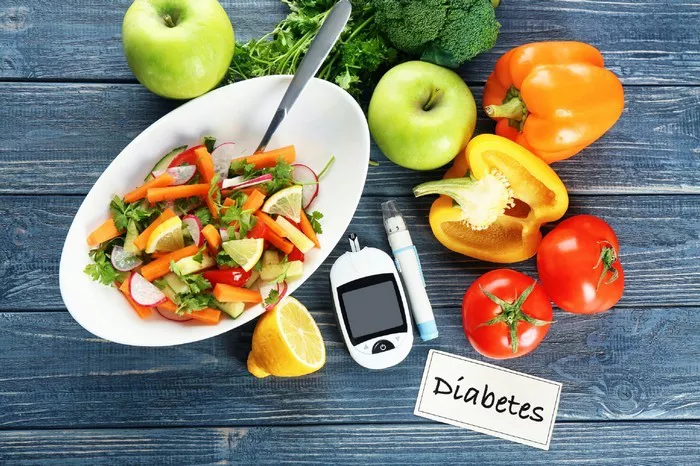Type 2 diabetes, a chronic condition where the body becomes resistant to insulin or doesn’t produce enough of it, affects millions worldwide. Effective management of type 2 diabetes is crucial to reduce the risk of complications like heart disease, kidney problems, and nerve damage. One of the most powerful tools for managing type 2 diabetes is diet.
A well-balanced diet tailored to the specific needs of individuals with type 2 diabetes can help regulate blood sugar levels, improve insulin sensitivity, and enhance overall health. This article will delve into the best types of diets for type 2 diabetes, examining the science behind blood sugar control, the impact of different nutrients, and practical tips for creating an individualized meal plan.
The Role of Diet in Type 2 Diabetes Management
The goal of any diabetes diet is to keep blood glucose levels within a healthy range. This means that meals should be carefully planned to avoid large spikes in blood sugar, which can occur when too many carbohydrates are consumed at once.
In addition to managing blood sugar, an ideal diet for type 2 diabetes can also help with weight management, reduce inflammation, and lower the risk of other complications such as heart disease and high blood pressure. Diet, combined with regular physical activity and proper medication, forms the cornerstone of a well-rounded diabetes management plan.
Key Principles of a Type 2 Diabetes Diet
To create a diet plan that supports blood sugar control, the following principles should be considered:
1. Focus on Low Glycemic Index (GI) Foods
The glycemic index (GI) measures how quickly carbohydrate-containing foods raise blood sugar levels. Low-GI foods are digested and absorbed more slowly, leading to a more gradual increase in blood sugar. Including low-GI foods in the diet can help reduce blood sugar fluctuations and improve long-term blood sugar control.
Examples of low-GI foods include:
-
Non-starchy vegetables (e.g., leafy greens, tomatoes, cucumbers)
-
Whole grains (e.g., oats, quinoa, barley)
-
Legumes (e.g., lentils, chickpeas, beans)
-
Berries and citrus fruits
2. Emphasize Fiber-Rich Foods
Dietary fiber, especially soluble fiber, plays a crucial role in regulating blood sugar levels. Soluble fiber slows the absorption of sugar and improves insulin sensitivity. Additionally, fiber promotes digestive health and aids in weight management by providing a feeling of fullness.
High-fiber foods to include in a diabetes-friendly diet:
-
Whole grains like brown rice, oats, and whole-wheat bread
-
Legumes, such as beans, lentils, and peas
-
Non-starchy vegetables, including broccoli, spinach, and cauliflower
-
Fruits such as apples, pears, and berries (in moderation)
3. Choose Lean Proteins
Protein helps to stabilize blood sugar levels by slowing down the absorption of carbohydrates. Lean protein sources are ideal as they provide essential nutrients without adding excess saturated fats that can worsen insulin resistance. Additionally, protein can help control hunger and prevent overeating, which is beneficial for weight management.
Recommended lean protein sources:
-
Skinless poultry (chicken or turkey)
-
Fish and seafood (especially fatty fish like salmon, which is rich in omega-3 fatty acids)
-
Plant-based proteins (tofu, tempeh, edamame)
-
Eggs (in moderation)
-
Low-fat dairy products (e.g., Greek yogurt, cottage cheese)
4. Healthy Fats in Moderation
While fat is an essential nutrient for overall health, it’s important to choose healthy fats that support heart health and reduce inflammation. Unhealthy fats, such as trans fats and saturated fats, can exacerbate insulin resistance and increase the risk of cardiovascular disease, which is already a concern for many people with type 2 diabetes.
Healthy fats to include:
-
Monounsaturated fats from olive oil, avocados, and nuts
-
Omega-3 fatty acids from fatty fish like salmon, mackerel, and sardines, as well as flaxseeds and chia seeds
-
Polyunsaturated fats from nuts, seeds, and certain vegetable oils
5. Control Carbohydrate Intake
While carbohydrates are the body’s main source of energy, managing carbohydrate intake is crucial for blood sugar control in people with type 2 diabetes. This doesn’t mean cutting carbs entirely, but rather choosing healthy, complex carbohydrates that provide steady, slow-releasing energy.
Here’s how to control carbohydrate intake:
-
Choose whole grains over refined grains, as they have a lower glycemic index and provide more fiber.
-
Limit sugary foods and beverages, such as sugary drinks, candy, and baked goods, as they cause rapid spikes in blood sugar.
-
Portion control is also key. Balancing the number of carbohydrates consumed at each meal and spread evenly throughout the day can help maintain steady blood glucose levels.
Types of Diets for Type 2 Diabetes
There are various types of diets that can be beneficial for people with type 2 diabetes. Below are some of the most researched and effective diet patterns:
1. The Mediterranean Diet
The Mediterranean diet is consistently recognized as one of the healthiest diets for managing diabetes and improving overall health. It is rich in fruits, vegetables, whole grains, legumes, nuts, and seeds, with a focus on healthy fats from olive oil and fatty fish. The diet also includes moderate amounts of lean protein, such as poultry, eggs, and dairy.
Key benefits of the Mediterranean diet for type 2 diabetes:
-
Reduces inflammation, which can improve insulin sensitivity.
-
Promotes heart health, reducing the risk of cardiovascular complications.
-
Supports weight management due to the high fiber content of whole plant foods.
2. The DASH Diet (Dietary Approaches to Stop Hypertension)
Originally designed to lower blood pressure, the DASH diet is also beneficial for managing type 2 diabetes. It emphasizes fruits, vegetables, whole grains, lean proteins, and low-fat dairy while limiting sodium, sweets, and processed foods.
Key benefits of the DASH diet for type 2 diabetes:
-
Lowers blood pressure, which is important for people with diabetes who are at risk of cardiovascular disease.
-
Encourages nutrient-dense, whole foods that support overall health.
-
Reduces the consumption of processed and high-sodium foods, which can worsen health complications.
3. The Low-Carb Diet
A low-carb diet has been shown to help regulate blood sugar levels and promote weight loss in people with type 2 diabetes. By reducing the intake of carbohydrates, blood glucose levels can be more easily managed, as there is less sugar entering the bloodstream.
Types of low-carb diets for diabetes management:
Ketogenic diet: Very low in carbs, high in fat, and moderate in protein. This diet induces ketosis, a state where the body burns fat for energy instead of carbohydrates.
Atkins diet: Focuses on reducing carbohydrate intake and emphasizes protein and healthy fats.
Low glycemic index diet: Focuses on eating foods that have a low GI, which prevents large spikes in blood sugar.
4. The Plant-Based Diet
A plant-based diet, especially when it includes a variety of whole foods, is associated with a reduced risk of type 2 diabetes and can help with blood sugar control. This diet excludes animal products and emphasizes fruits, vegetables, legumes, whole grains, and plant-based protein sources.
Key benefits of a plant-based diet for type 2 diabetes:
-
Rich in antioxidants and anti-inflammatory compounds that improve insulin sensitivity.
-
High in fiber, which supports digestion and helps regulate blood sugar levels.
-
Can assist with weight management due to its focus on low-calorie, nutrient-dense foods.
Special Considerations for Type 2 Diabetes Diet
While a well-balanced diet is key for managing type 2 diabetes, there are a few additional considerations to keep in mind:
1. Meal Timing and Frequency
For people with diabetes, it’s not just about what they eat, but when they eat. Eating smaller, more frequent meals throughout the day can help prevent large swings in blood sugar. This approach can also help maintain energy levels and prevent overeating.
2. Hydration
Staying well-hydrated is essential for managing diabetes, as dehydration can worsen blood sugar control. Water is the best choice for hydration, and sugary drinks should be avoided. Herbal teas and water with lemon are good alternatives.
3. Monitoring Blood Sugar Levels
Tracking blood sugar levels regularly is important to see how different foods affect individual blood glucose levels. By keeping a food and blood sugar log, people with type 2 diabetes can better understand which foods work best for them and make adjustments accordingly.
4. Individualization
It’s important to note that no single diet works for everyone with type 2 diabetes. Factors such as age, gender, activity level, medical history, and personal preferences must be taken into account when designing a diabetes-friendly meal plan. A registered dietitian can help create an individualized plan that meets specific needs.
Conclusion
The best diet for type 2 diabetes is one that focuses on whole, nutrient-dense foods, with an emphasis on low-GI, high-fiber foods, lean proteins, and healthy fats. Diets like the Mediterranean, DASH, low-carb, and plant-based diets have all shown promise in managing blood sugar levels and improving overall health.
However, managing type 2 diabetes is not just about following a specific diet, but also about making sustainable, healthy lifestyle changes. By monitoring blood sugar levels, staying hydrated, and being mindful of meal timing and portion sizes, individuals with type 2 diabetes can take control of their health and minimize the risk of complications.
With the right diet and lifestyle modifications, people with type 2 diabetes can lead active, healthy lives and enjoy a variety of foods while maintaining good blood sugar control. The journey toward better health starts with understanding the power of nutrition and making informed choices that support overall well-being.
Related topics:
What’s the Best Diet for Gestational Diabetes



























